City guides


Aberdeen Travel Guide
Drenched in fresh, salty air and bright, clean light, the seaside city of Aberdeen is the perfect manifestation of all of one's romantic imaginings of Scotland. Here the rugged natural beauty of wide oceans and rolling mountains merges with rich history and fascinating culture. It is unsurprising that it has been praised by National Geographic as "one of the world's top-rated coastlines". Aberdeen's history seamlessly melds with its contemporary, industrious nature. Doric; an original Scots language, can still be heard in the streets, and gothic towers rub shoulders with sleek, modern structures. Lose yourself amid the city's enchanting streets and towering buildings, which glitter in the midday sunshine due to the prized Aberdeenshire granite.
History buffs will be delighted by the Old Town, which flaunts a university founded in 1495, and by stories of the legendary Picts who once used to inhabit the region. Pay a visit to the seemingly endless beach, where it is possible to catch a glimpse of dolphins frolicking in the expansive bay and to view local fisherman hauling in their catch of the day. Sample this fantastic local produce at one of the many welcoming eateries in the city, not forgetting to finish off the meal with a 'wee dram' of the region's finest whiskey. There are spectacular coastal golf courses to put to the test and unparalleled natural beauty of the nearby Cairngorm mountain range to take in with a hike or by bike.
Things to do in Aberdeen
Aberdeen is a place that can be enjoyed by young and old alike. One of the world's largest international youth festival takes place here in the summer, with literature, jazz and traditional folk festivals taking place in the spring. For history lovers, Aberdeen has an abundance of museums and tours of its historic buildings. Aberdeen also acts as a perfect hub from which to explore the majesty of the Grampian Highlands, enjoy an extended tipple on the Malt Whisky trail, or ramble around ancient Scottish castles and historic battlefields nearby.
Aberdeen has a few worthy attractions to draw tourists in. The Maritime Museum and Aberdeen Art Gallery are worth a visit to get a taste of the local culture and history, while picturesque Brig o' Balgownie, the lovely Duthie Park, and a number of other pleasant green spaces in the city are at their best in the summer months, May to August. The vibrant waterfront district also merits exploration, as well as some of the lovely sandy beaches close by. A little further afield is the malt whisky trail of the Grampian Highlands, and Balmoral Castle, one of the most magnificent castles in the British Isles.
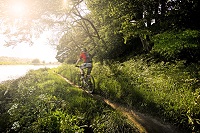
Getting Outdoors
There are plenty of hiking, running and cycling trails dotted in and around Aberdeen, and outdoor fanatics will have no shortage of things to do during their time in the city. Kirkhill Forest, Gight Wood Reserve and the Bin Forest are just three of the many outdoor havens located near Aberdeen, and each offer magical walks and cycling trails of varying degrees of difficulty.
Royal Deeside Tours and Hillgoers are two companies that offer guided walking and hiking tours of such reserves. They're ideal options for visitors that are wary of taking on new landscapes on their own or who are traveling without a hired car, as most of these areas are best reached by vehicle. For snow sport enthusiasts, Lecht 2090 is a slope that towers above the Eastern Cairngorms and is a popular ski spot during the winter. Fraserburgh Beach is a surfing and water sport paradise during the summer time.
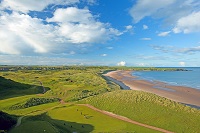
Golf
With courses stretched out over rambling beaches, or hidden within castle-dotted forests, Aberdeen is likely to tempt even the most unenthusiastic of golfers to a round. Some of the world's greatest golf tournaments have taken place in the area. The Royal Aberdeen Golf Club having hosted the Scottish Open in 2014, and the Trump International Golf Links in Balmedie wears the title of Best Modern Golf Course in Great Britain and Ireland.
The UK's highest golf course is housed at Braemer, which straddles the majestic Cairngorms National Park, and it is even possible to attempt a birdie at the royal's summer retreat, Balmoral Castle. Come summer time, when this northern area gets twelve hours of sunshine, it is possible to enjoy a full day of the favourite Scottish pastime, before retiring to a nearby country pub to enjoy one of the region's many fine whiskies.
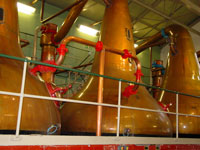
Malt Whisky Trail
The Grampian Highlands area is famous for its delicious malt whisky, and the best way to explore this long-standing tradition is by following a whisky route to eight different distilleries, including the Glenfiddich Distillery that was founded in 1886. Visitors can learn about the age-old process of coaxing different scents, tastes and colours from a mixture of yeast, barley, peat and water. Most distilleries offer tours and tastings but some can only be visited with advanced bookings.
Glenfiddich, the most famous and popular, is worth visiting alone if you don't have time for a full whisky tour. The renowned distillery offers three different tours. The Classic Tour, which is a fantastic introduction to the art of whisky making, takes an hour and includes tastings, it is free of charge with no advance booking required. The Explorers Tour takes an hour and a half, including a more extensive tour and tasting session, this tour should be booked in advance. The Pioneers Tour, lead by the senior guide, provides a four-hour immersion in the world of the distillery and will delight connoisseurs, affording the chance to taste whiskies up to 30 years old.
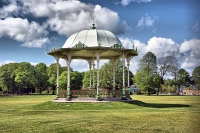
Duthie Park
Created by Lady Elizabeth Duthie in 1881 to commemorate her uncle and brother, Duthie Park is beautifully situated on the banks of the River Dee and draws hundreds of visitors to its colourful floral displays and 44 acres (18ha) of well-maintained grounds. The park is famous for its Winter Garden, an indoor garden with a spectacular array of tropical plants and cacti. The Rose Garden with over two million plants and the stylish Japanese Garden are not to be missed. There is also a boating pond, plenty of winding walkways for a romantic stroll, children's playgrounds and a restaurant. The park is great for picnics and often hosts concerts and other fun events.
It's a great spot for those wanting some exercise, with joggers traversing the paths, and people playing cricket on the lawns. Although the gardens are most popular in the summer months, the indoor gardens ensure that it is worth visiting in any season. Other 'green lungs' worth exploring in Aberdeen include Hazelhead Park, the Union Terrace Gardens and the Johnston Gardens.
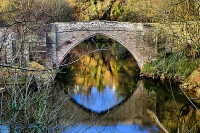
Brig o' Balgownie
Built from granite and sandstone, the single-arched Brig o' Balgownie, stretching over the River Don, dates back to the 13th century and was completed in 1320 during the Scottish War of Independence. Although part of the bridge has never changed, it was extensively renovated in the 1600s after it had fallen into disrepair. It is a very picturesque structure and these days its main allure is purely aesthetic, but for five centuries the bridge was strategically vital as the only means of moving large armies quickly along the east coast of the region. It also formed part of an important trade route to the northeast of Scotland.
The bridge stretches for 39 feet (12m) and offers beautiful views of the river. It is only open to pedestrians and bicycles and is popularly used by students as a fun place to jump into the river during the summer months. The area around the Brig o' Balgownie is rather charming, with some quaint cottages, making it a lovely place for a stroll. The modern Bridge of Don is only a 15-minute walk away from the Gothic original, and the lovely Seaton Park is also just a stroll down the path from Brig o' Balgownie. There are plenty of pretty picnic spots located near the bridge or alongside the river, making this a wonderful activity to undertake on a balmy summer's evening or a crisp, wintery afternoon.
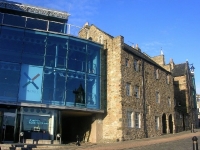
Aberdeen Maritime Museum
Situated on historic Shiprow, with spectacular views of the busy harbour, the Aberdeen Maritime Museum proudly exhibits the city's strong maritime history and its close connection to the sea. It is an award-winning museum and is housed partly in Provost Ross's House, built in 1593, which justifies a visit all by itself for lovers of architecture. The city's significance in the North Sea oil industry is explored, as well as the importance of fishing, shipbuilding and sailing in the development of the area.
Displays are aimed at allowing visitors the chance to investigate the working environment and duties of workers on offshore oil platforms, and include collections of photographs and plans from major Aberdeen shipbuilders, and various naval paintings. Some interactive exhibits ensure that the museum is modern and that children should be entertained by the content, making it a good stop for families. A pirate mascot called Granite Jack guides kids through the museum and there are quiz sheets designed for specific age groups for younger visitors to fill out as they explore. There is also a café and gift shop at the museum for souvenirs and refreshments.
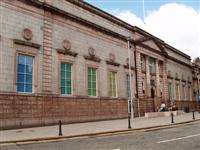
Aberdeen Art Gallery
The Aberdeen Art Gallery was first opened in 1885, and more than a hundred years later, continues to be one of the city's most popular attractions. The gallery has a large permanent and changing collection, housed in an impressive 19th-century building with an exquisite marble interior. Highlights include collections of Modern Art, the Scottish Colourists (including artists such as Leslie Hunter and Francis Cadell), and the Post-Impressionists. The collection spans from the 15th century to the present.
There is also a collection of local applied art and crafts, including fine examples of Aberdeen silver. The collection of the Aberdeen Art Gallery is extremely varied, ensuring that art lovers of all kinds should find something to delight them. The gallery also hosts a full programme of temporary exhibitions, lectures, concerts and other events, details of which can be found on the official website.
The Aberdeen Art Gallery reopened in November 2019 after undergoing major renovations, with the revamped facility housing more galleries and significant improvements to social spaces, such as a new top-floor cafe bar and roof terrace. The work took two years longer than expected and cost around £5m more than the original £30m budget.
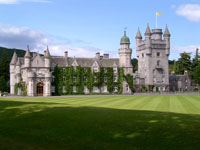
Balmoral Castle
No trip to Scotland is complete without a visit to one of its magnificent castles, and Balmoral Castle - set on the banks of the River Dee - is one of the best known and most prestigious. The castle, with its fairy-tale turrets, is set on 50,000 acres (20,234 ha) of spectacular grounds, and the Royal Family has preserved the surrounding wildlife, buildings and scenery since it was bought by Queen Victoria and Prince Albert in 1852. A visit to Balmoral includes access to the gardens, some exhibitions, the ballroom (the largest room in the castle) and the grounds, but the Queen's Rooms are out of bounds. Many beautiful works of art and royal treasures are on display despite the limited access. The Balmoral Castle and its estate are set within the Cairngorms National Park and offer breath-taking vistas of the Highlands. An audio guide in English, German, French and Italian is included in the entrance fee. It is recommended that visitors allow at least one and a half hours for a visit to Balmoral, and are advised that entry will not be allowed after 4.30pm.
Getting Around
Old Scottish cities like Aberdeen are fairly compact, so walking is a good way to get to many of the sights in the city centre. Longer journeys will require transport however, and many visitors choose to take advantage of the city bus system, run by First Aberdeen, when travelling to the suburbs. Tickets are sold by the driver, and both single-trip tickets and day passes are available (note that drivers do not give change). Taxis are also widely available from ranks dotted around the city or by phone, and though expensive this is the best mode of transportation in the evenings when the buses are less frequent.
Aberdeen Climate and Weather
Aberdeen is one of the coldest cities in the UK, though it is mild in comparison to much of northern Europe. Winters feature average temperatures around 23°F (-5°C), while the days are very short, with December seeing the sun for only six hours per day. Summers are much more hospitable, with long days (up to 18 hours of daylight) and mild temperatures ranging between 50°F (10°C) and 64°F (18°C). Precipitation stays fairly steady throughout the year, although October and November receive a little more rain than other months. The best time to visit Aberdeen is during the summer months (June to mid-September), although visitors should be prepared for sudden showers.
United Kingdom travel info
Electricity
The electrical current in the UK is 240 volts, 50Hz. Flat, three-pin plugs are standard.
Language
English is the official language, though visitors will be astonished by the variety of regional accents.
Money
The currency is the British pound (GBP), which is divided into 100 pence. ATMs are available in almost all towns and Visa, MasterCard and American Express are widely accepted. Foreign currency can be exchanged at bureaux de change and large hotels, though better exchange rates are likely to be found at banks.
Tipping
Tips of 10 to 15 percent are expected in restaurants and upmarket hotels in the UK if a service charge hasn't been included. Hotel service staff receive an optional amount, while taxi drivers are usually given 10 to 15 percent of the fare. Tipping bartenders isn't expected, and tipping for other services is discretionary.
Health
There are no specific health risks associated with travel to the UK and food and water can be considered safe. The British National Health Service is excellent, and a number of countries have reciprocal health agreements with the UK including Australia, New Zealand and EU countries. Visitors from other countries such as Canada, South Africa and the United States are advised to take out comprehensive travel insurance.
Safety
It's generally safe to travel throughout the UK.
Local customs
Handshaking is customary when introduced to someone new. Smoking is banned in all enclosed public spaces, including pubs, restaurants and public transport. Queue barging is frowned upon and there is strict etiquette on escalators: stand on the right, walk on the left. Visitors may find Londoners more rushed and less friendly than locals in other parts of the country, particularly on London transport, where tourists are often the only people who talk.
Doing business
The four countries of the United Kingdom, although culturally and historically different, generally keep to the same business practices. Politeness and punctuality are key to good business relations and initial meetings are often conducted formally and impersonally, becoming more open and social as things progress. Business cards are exchanged at introductions, and dress is formal with dark suits preferred. Business hours are generally 8am to 5pm Monday to Friday with an hour taken at lunch.
The communication style can be difficult to adjust to: the British people respect politeness to a point that often obscures their ability to say exactly what they mean. As a result, travelling business people may need to learn to 'read between the lines' and to take cues from tone of voice and facial expression. Humour is also an integral part of the British system of communication, and is used to diffuse a tense situation and to cultivate relationships. Foreigners should never assume that an attempt at humour undermines a person's ability to do their job, or discredits the importance they attach to a deal or negotiation. Furthermore, they shouldn't be fooled into thinking that the British propensity for irony and sarcasm equates with an informal work environment.
Foreigners should be tactful during meetings, avoid becoming emotional and illustrate their experience with the subject at hand. Performance and initiative are looked upon favourably, whereas academic pretension is given far less credence. Meetings are often used as platforms for debate, rather than moments of confirmation, so there should be no surprise if not much progress is made. Foreigners should be sure to respect and appeal to all parties involved, as the British have recently begun to take a far flatter approach to management and the responsibility of decision-making. And if things go well, it's worth purchasing a pint or two for clients or colleagues; though gifts are borderline inappropriate, a round of drinks will rarely be refused.
Duty free
Travellers can bring the following goods into the UK tax or duty free: 200 cigarettes, 100 cigarillos, 50 cigars or 250g of tobacco, 18 litres of still table wine, 42 litres of beer, 4 litres of spirits or strong liqueurs or 9 litres of fortified wine, sparkling wine or other alcoholic beverages of less than 22 per cent volume.
Communications
The international country dialling code for the UK is +44. Mobile phone coverage is extensive and free WiFi is widely available in pubs and coffee shops. Travellers can purchase local prepaid SIM cards for unlocked phones or use eSIMs if their cellular providers support it on their networks.
Passport & Visa
If a visa is not required, travellers should hold a return or onward ticket, and proof of funds for the duration of stay. Passports must be valid for the period of intended stay in the UK. It's highly recommended that travellers' passports have at least six months' validity remaining after the intended date of departure from their travel destination. Immigration officials often apply different rules to those stated by travel agents and official sources. For visitors who are visa exempt up to a maximum stay of six months, the period of stay will be determined by the Immigration Officer on arrival.
Entry requirements
US travellers must hold a passport that is valid for the duration of their stay; a visa is not required for stays of up to six months.
Canadian passports must be valid for at least the expected duration of the stay. No visa is required for stays of six months or less.
Australian passports must be valid for at least six months after the departure date. No visa is required for stays of six months or less.
South Africans require a valid passport and a visa for entry or transit through the UK. South African temporary passports are not recognised.
Under the Common Travel Area agreement, citizens from the UK and Ireland are not required to pass through passport control. They can travel between both countries without a valid passport if they can prove they are a valid UK or Irish national.
New Zealand nationals must hold a valid passport, but no visa is required for stays of up to six months.
Useful contacts
United Kingdom Tourism Website: www.visitbritain.com
999 (General)Embassies / consulates in other countries
British Embassy, Washington DC, United States: +1 202 588 6500.
British High Commission, Ottawa, Canada: +1 613 237 1530.
British High Commission, Canberra, Australia: +61 2 6270 6666.
British High Commission, Pretoria, South Africa: +27 12 421 7500.
British Embassy, Dublin, Ireland: +353 1 205 3700.
British High Commission, Wellington, New Zealand: +64 4 924 2888.
Embassies / consulates in United Kingdom
United States Embassy, London: +44 20 7499 9000.
Canadian High Commission, London: +44 20 7004 6000.
Australian High Commission, London: +44 20 7379 4334.
South African High Commission, London: +44 20 7451 7299.
Irish Embassy, London: +44 20 7235 2171.
New Zealand High Commission, London: +44 20 7930 8422.


